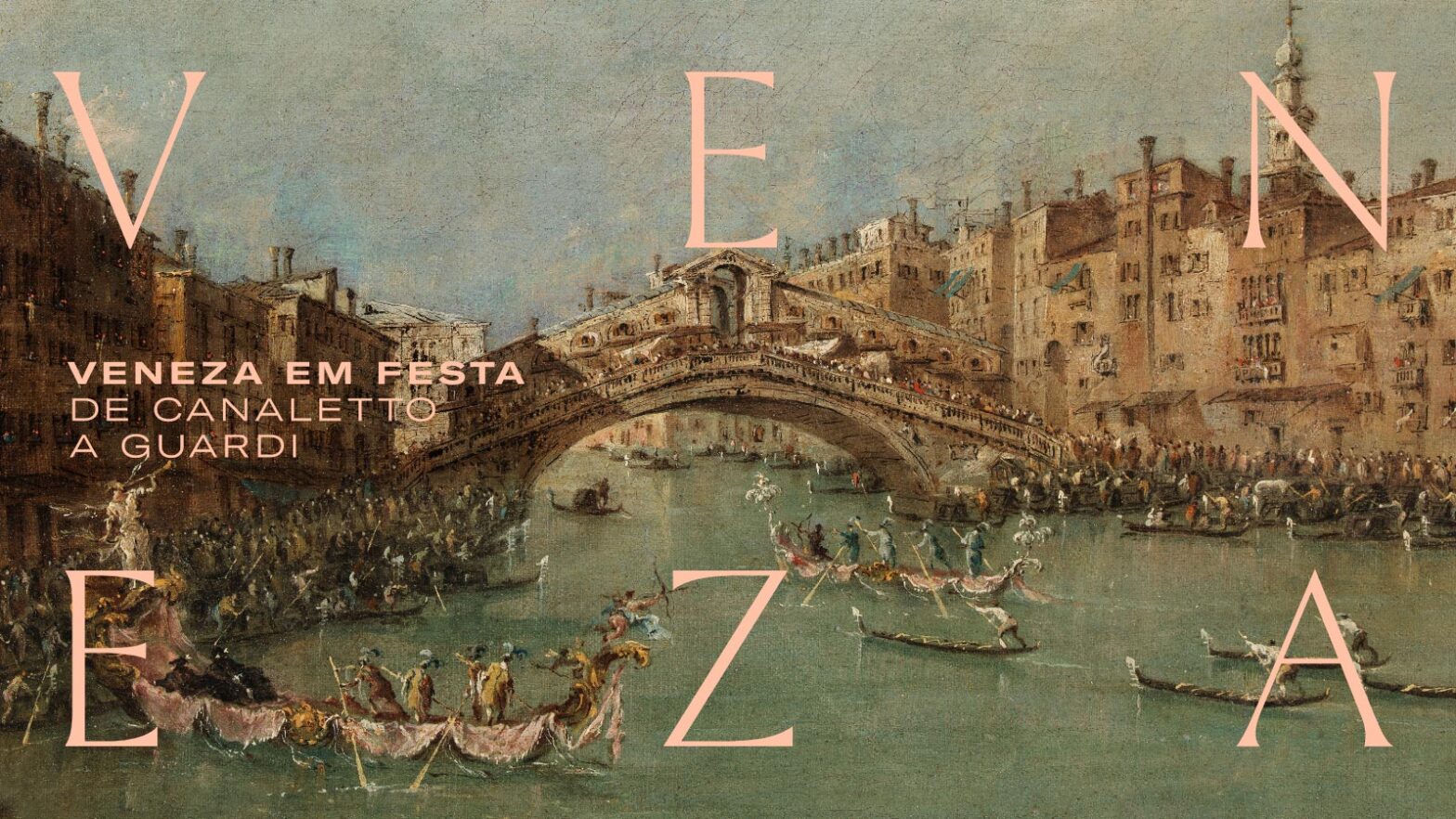The Club began its activities in 2025 with a guided tour of the ‘Venice in Celebration’ exhibition, the theme of which was 18th-century Venetian painting, a collaboration between the Calouste Gulbenkian Museum and the Thyssen-Bornemisza Museum in Madrid. We enjoyed paintings by Canaletto, Francesco Guardi, Giambabattista Tiepolo, Michele Mariechi and others.
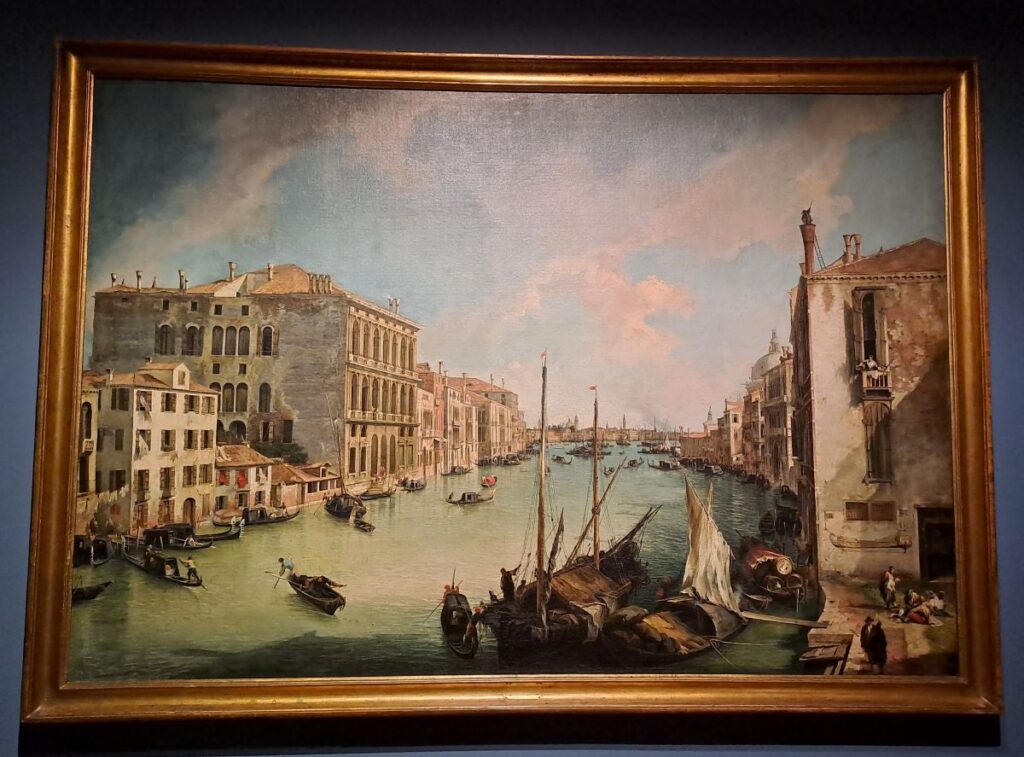
Canaletto demonstrated a splendid treatment of light and shadows and a perfect mastery of perspective, concentrating on accurately and meticulously representing the details of Venetian architecture, both in vedute (urban panoramic views) and capricci (compositions that combined real elements, such as famous buildings or monuments, on imaginary backgrounds).
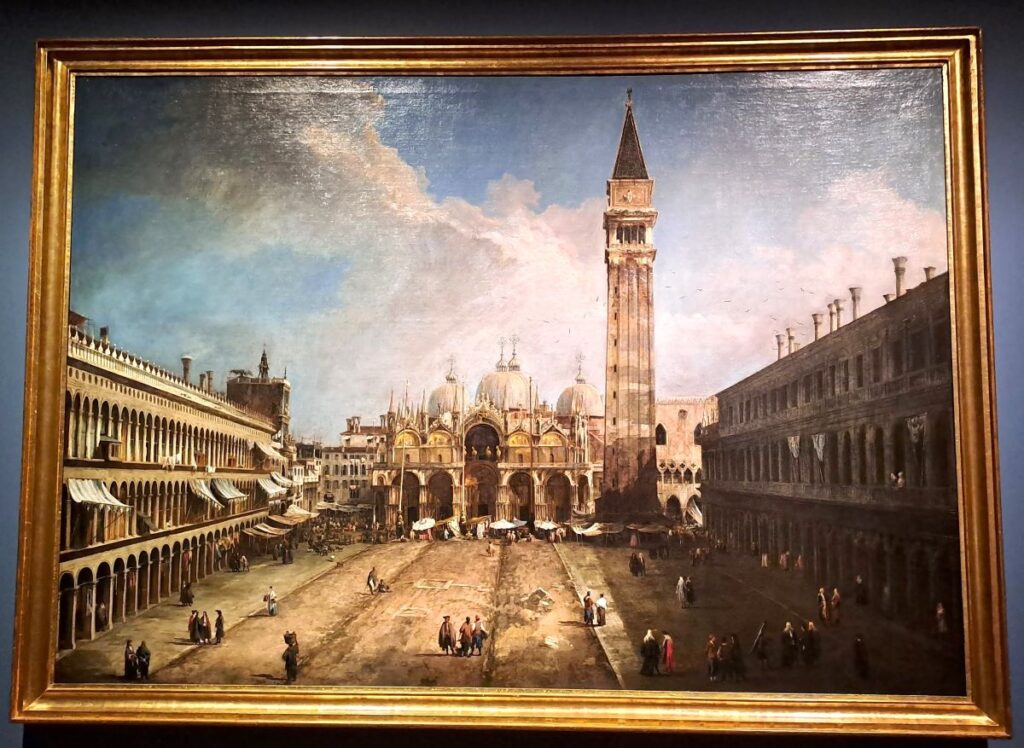
The realism that characterises Canaletto’s painting made it possible to establish a secure date for the painting, since the pavement of St Mark’s Square is depicted at the time it was being renovated, around 1723-1724. The perspective converges on the Basilica and the Campanile, with its impressive 98.6 metre high tower. Space in depth is achieved with Procuratie Vecchie bathed in light and Procuratie Nuove reproduced in shadow.

The painting depicts the Bucentauro, the ceremonial galley, on Ascension Day, moored in front of the Piazzetta returning to St Mark’s Square after the symbolic evocation of the marriage between Venice and the Adriatic Sea.
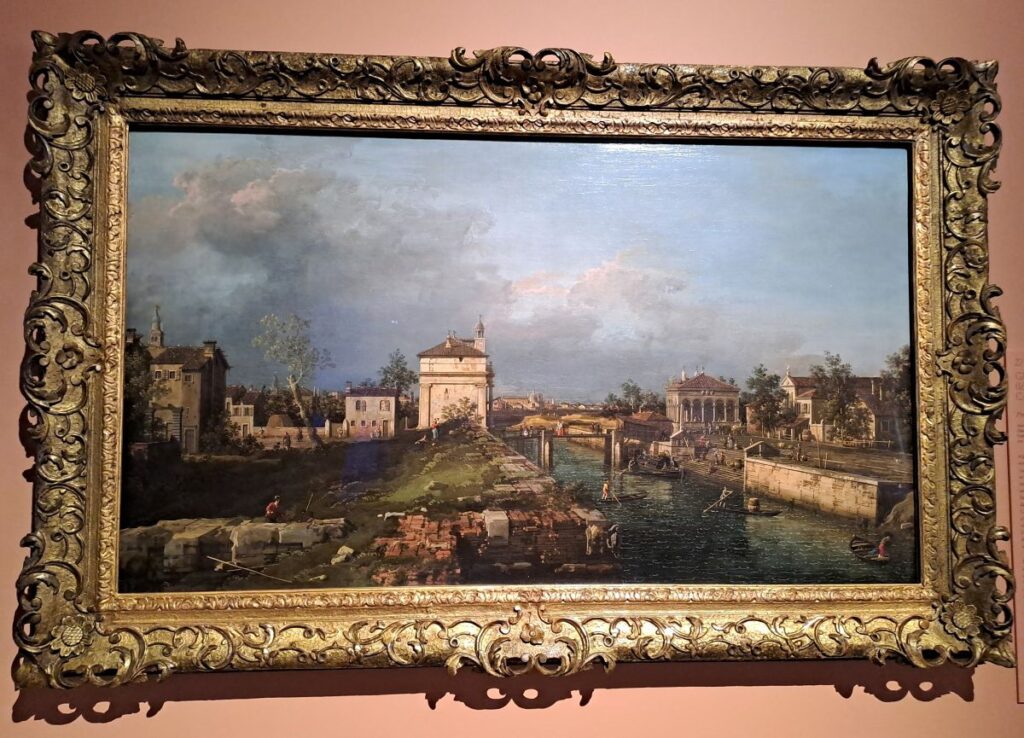

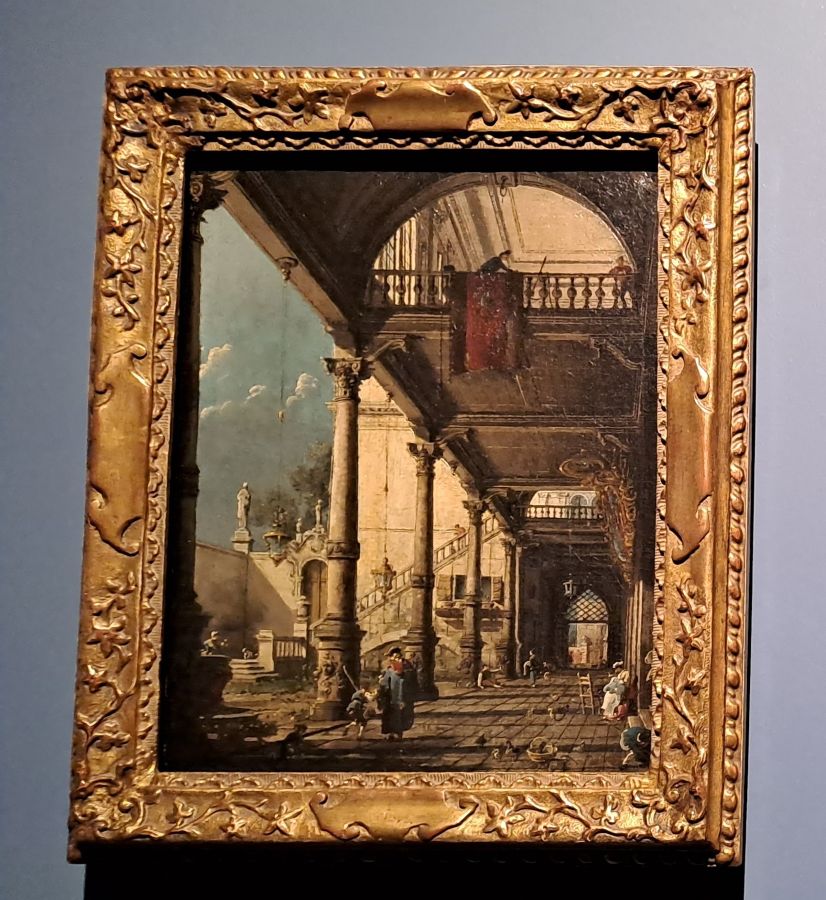
Francesco Guardi is considered one of the last painters of the classical Venetian school to immortalise the splendour of the ceremonies in the Serenissima.
His early works show a clear influence of Canaletto, but over time he created his own style, characterised by looser painting, vigorous brushstrokes, no attention to detail, and freely imagined architecture. In Guardi, the buildings often seem to have ‘melted’ and sunk into the lagoon. He paints Venice with cloudy skies, at the moment of twilight, unlike Canaletto who painted it in broad daylight.

The painting depicts the square on Ascension Day. You can see the Basilica, the Bell Tower, the Clock Tower, the Doge’s Palace and the Procuratie with arcades, where the shops with jewellery and textiles were located. In the foreground, in a festive setting, elegant silhouettes give the painting the movement and bustle of the party.

The painting depicts the Rialto Bridge from the Coal Bank. It is the only work in the Gulbenkian Collection to be signed by the painter (on the tablet next to the staircase).
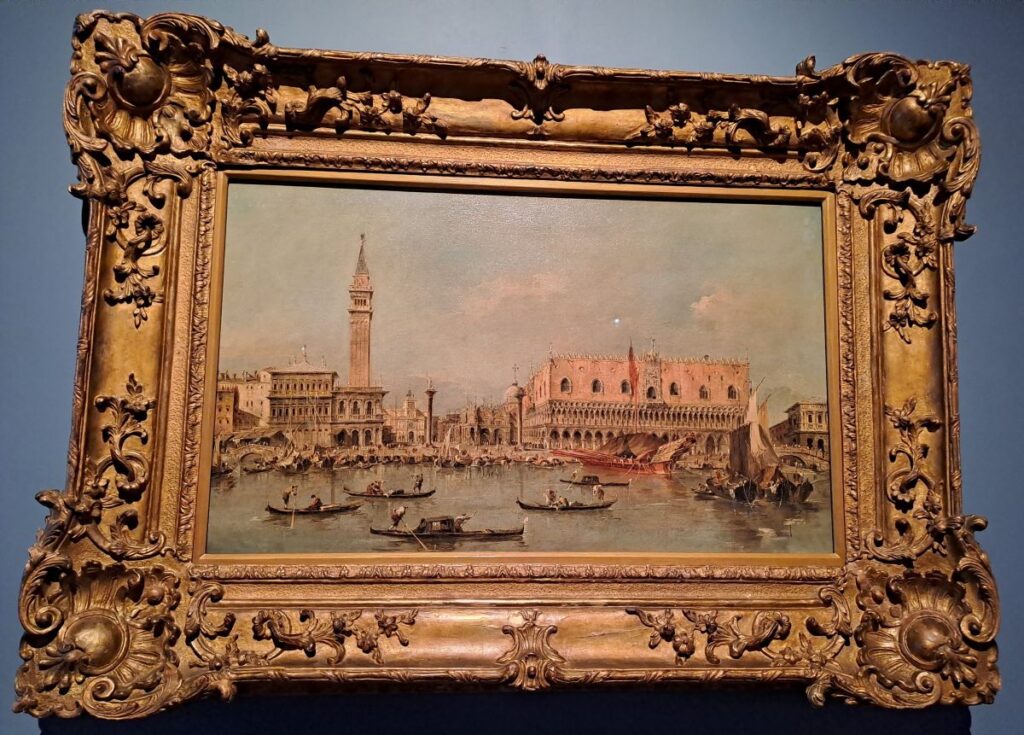
In this veduta, the painter painstakingly describes the buildings in the heart of Venice. This frontal view is inspired by a painting by Canaletto in the Louvre Museum.
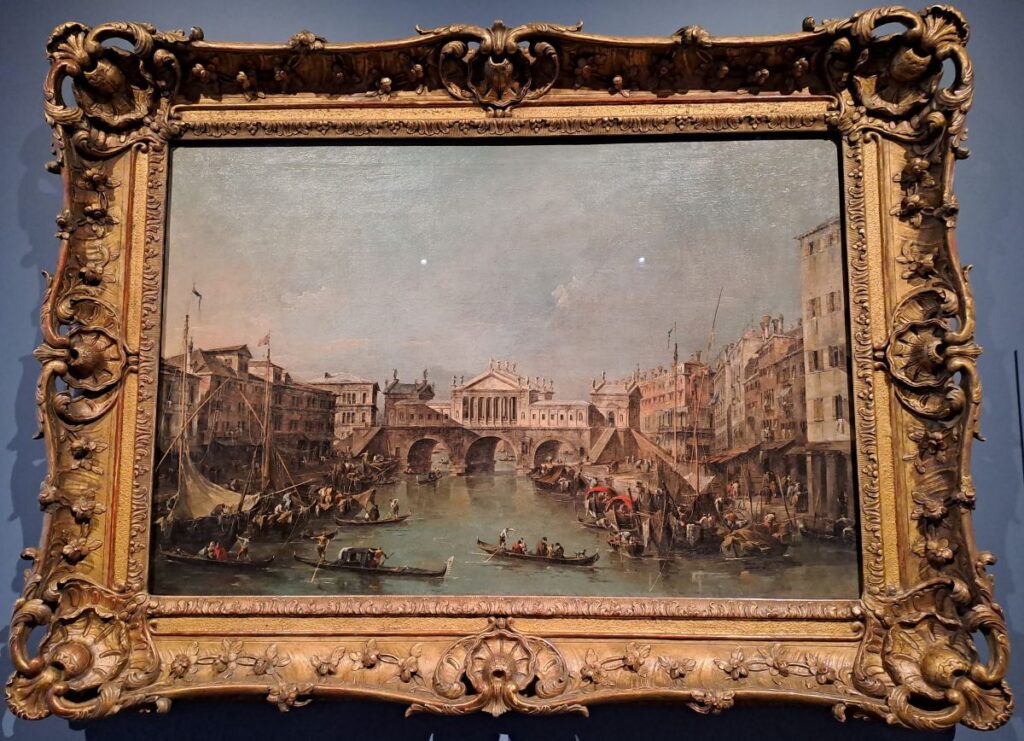
In this capriccio, Guardi represents the bridge designed by Palladio for the Rialto area, which was never built. The movement of people and boats between the Wine and Coal banks incorporates real elements into something that never existed.
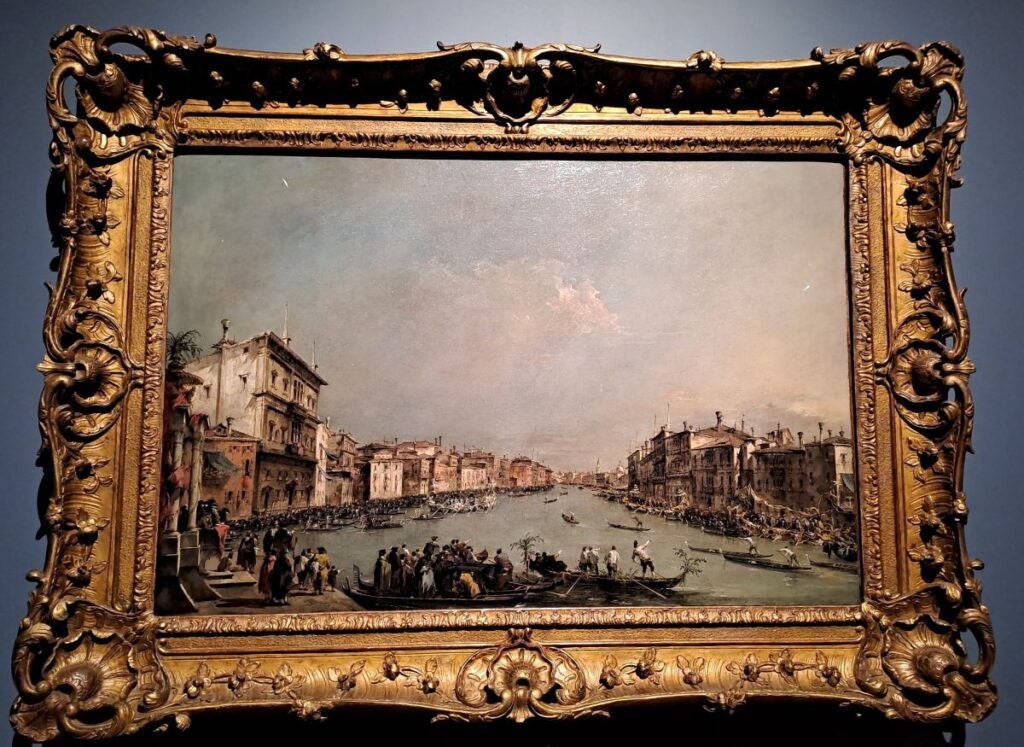
In this painting, inspired by a work by Canaletto, Guardi gives a wider perspective of the Grand Canal, a space in depth that stretches from the tribune near the Balbi Palace to the Rialto Bridge on the horizon. On the left, the floating pavilion where the prizes were awarded to the winners of the regatta.
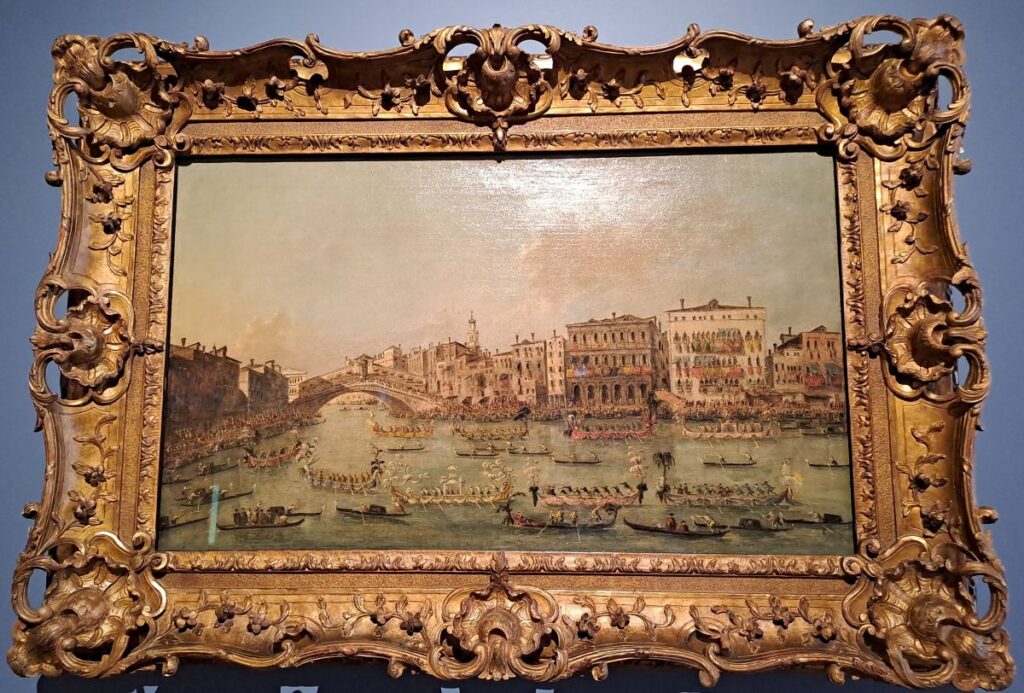
Giacomo was Francesco Guardi’s son and his paintings are less dynamic, with a less exuberant and inventive style, repeating successful motifs painted by his father throughout his career. In this painting, the presence of French banners on one of the gondolas leads us to believe that it was painted after the end of the Republic of Venice.
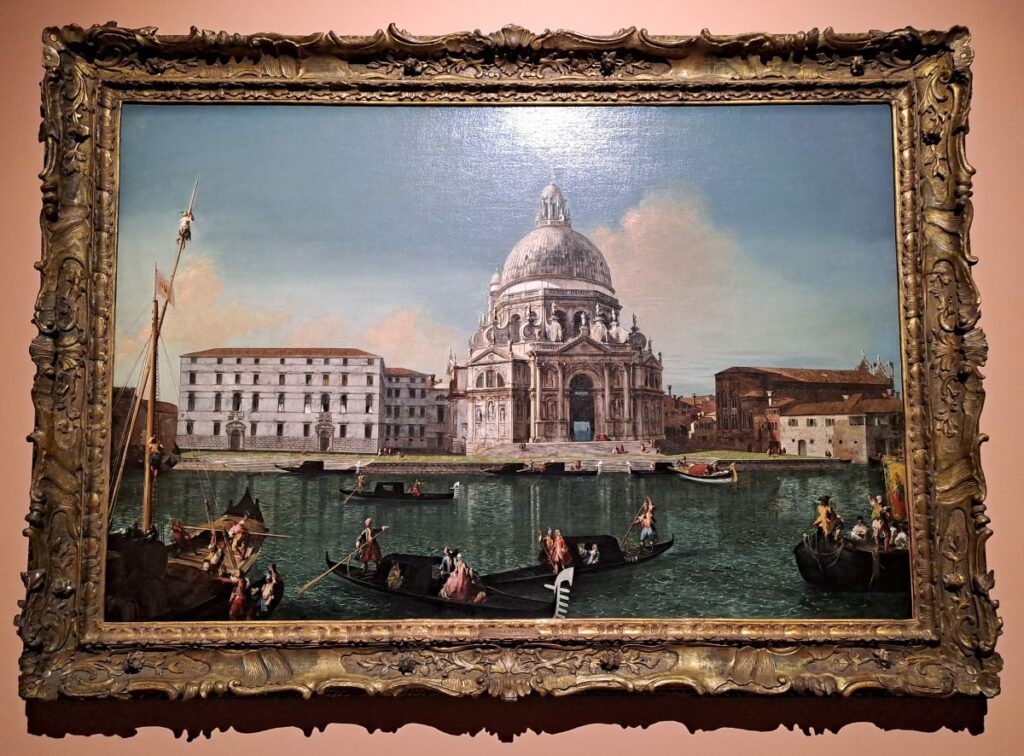
In this painting, Michele Marieschi depicts the Baroque Basilica of Santa Maria Della Salute, built in 1630 by the Senate during a plague epidemic and completed in 1687. Seeing Canaletto’s success and influenced by Luca Carlevarijs, Michele also dedicated himself to realising urban views of Venice.
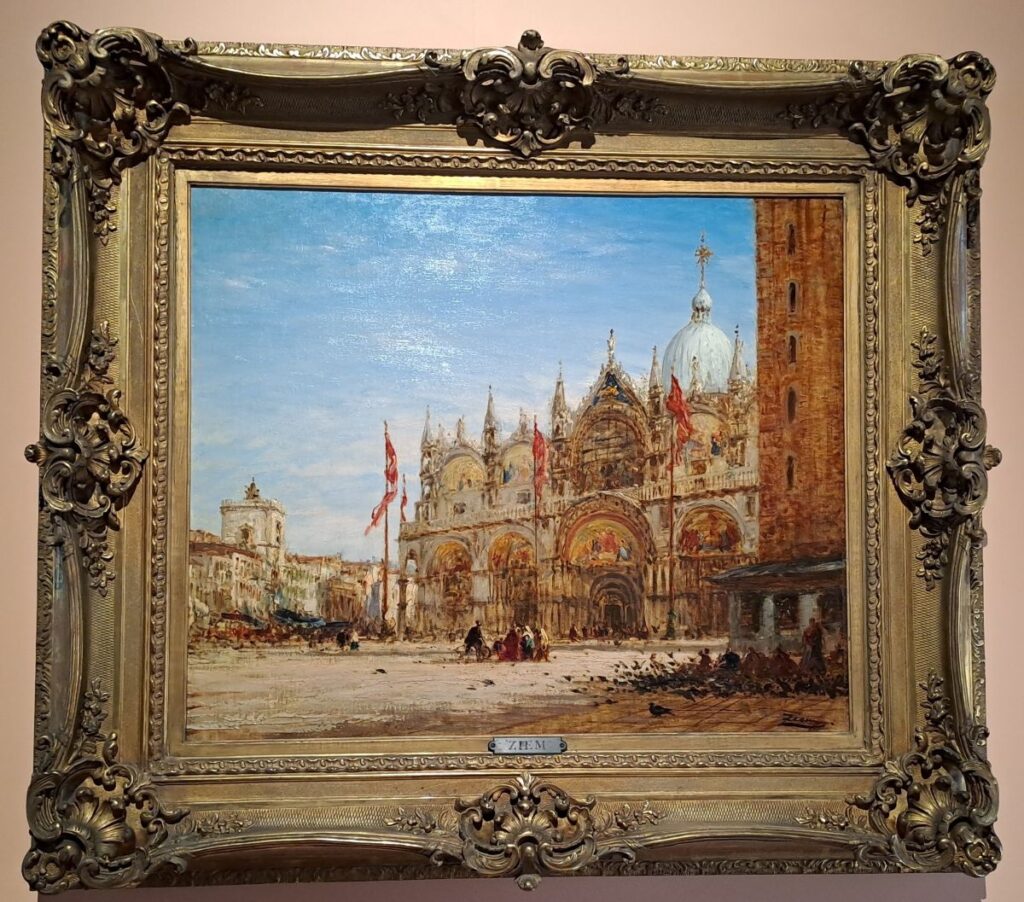
French painter Félix Ziem depicts St Mark’s Square with an oblique perspective and a richness of colour that gives a new perception of light and colour in painting.
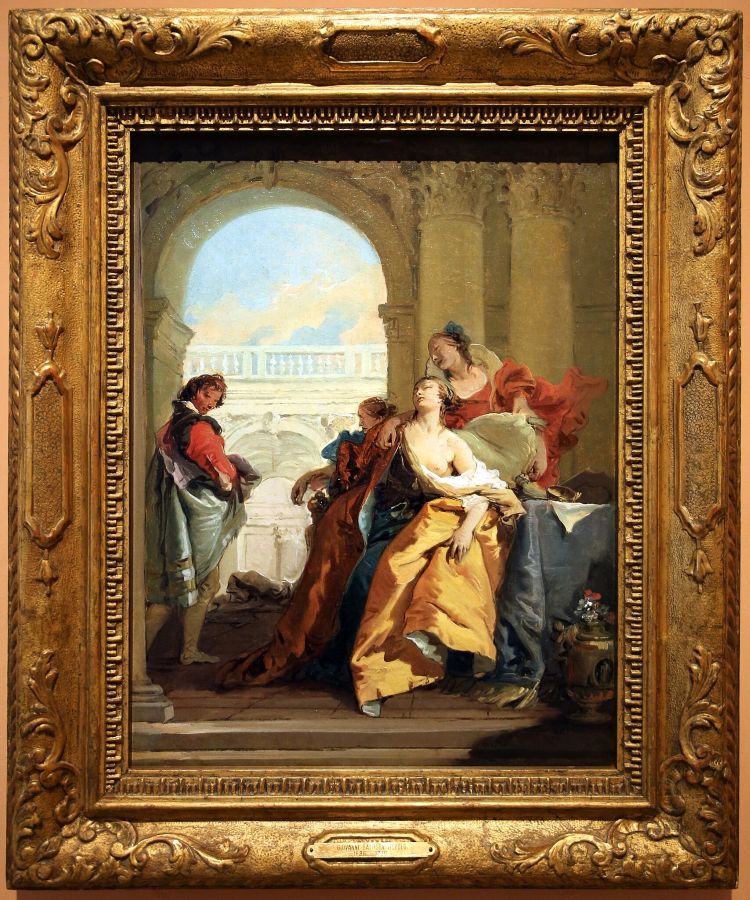
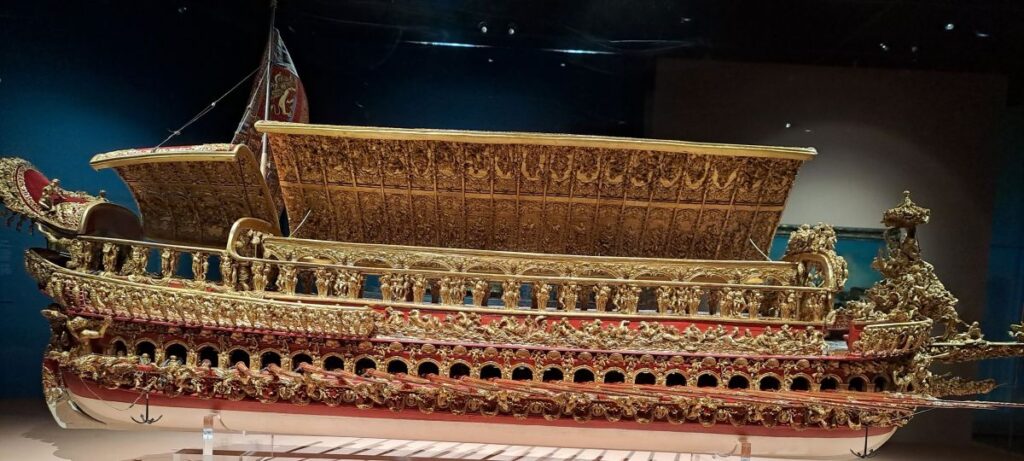
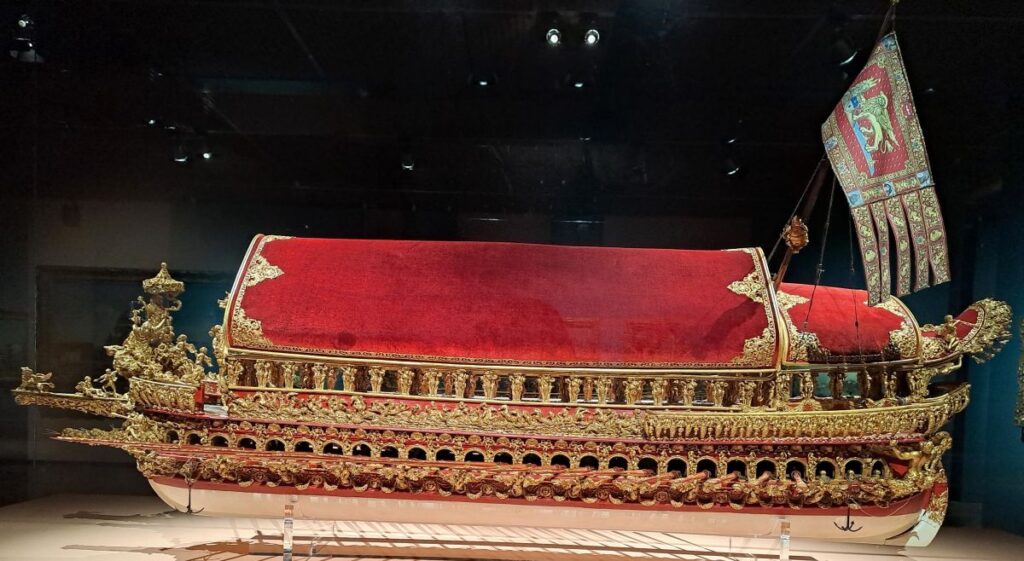
The Bucentaur – a replica of the Doge’s last ceremonial galley, built in 1729 and destroyed by the French in 1798 on the orders of Napoleon Bonaparte. The lower deck was for rowers, with a capacity for 42 oars. The upper deck, covered with a huge baldachin, formed a large room lined with red velvet, used by the Republic’s highest authorities, and ended at the stern with the Doge’s throne.
The boat was used for festivities, for parades in the lagoon to receive ambassadors and especially for the Feast of Ascension Day, the day of Venice’s symbolic marriage to the Adriatic Sea. The Doge, the Papal Nuncio and other distinguished guests boarded the Bucentauro, which headed for the Church of St Nicholas, where the Patriarch awaited the Doge to bless the ceremonial ring and throw it into the sea, an allusion to Venice’s naval power over the Adriatic. After Mass, a banquet was held in the Doge’s Palace.
These two paintings by Francesco Guardi illustrate the feast of Ascension Day.



